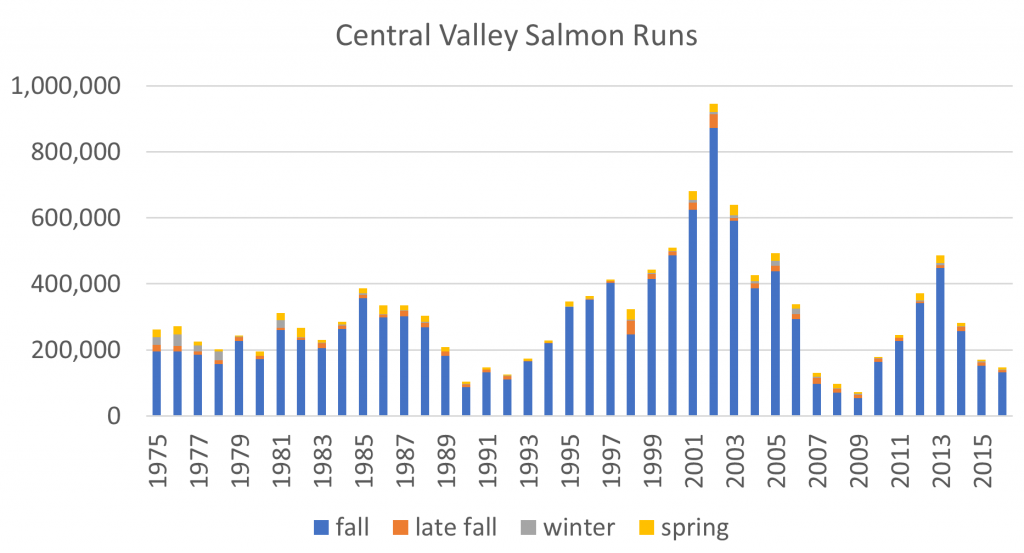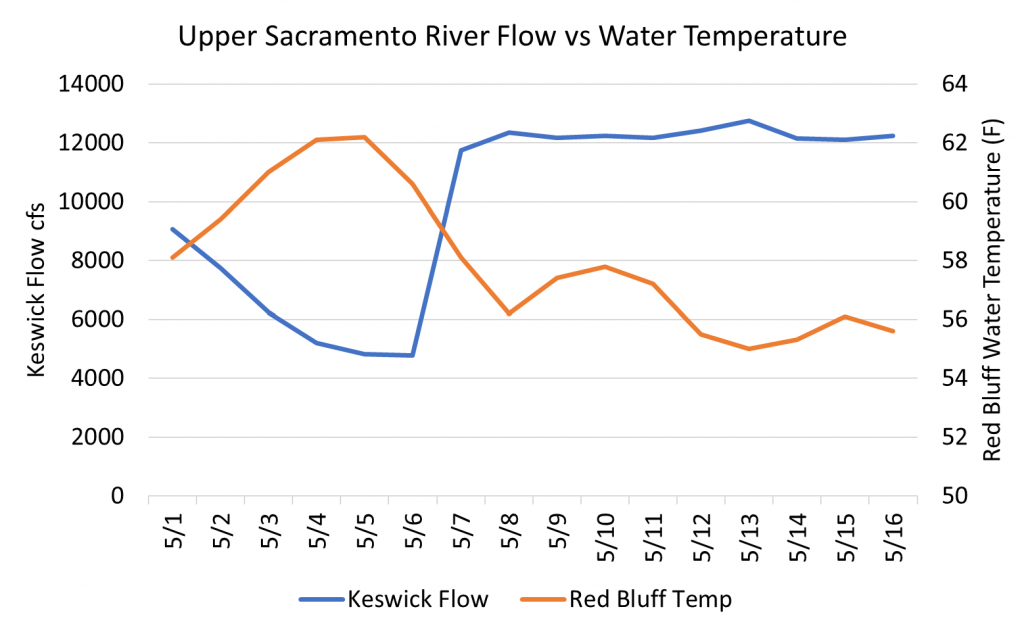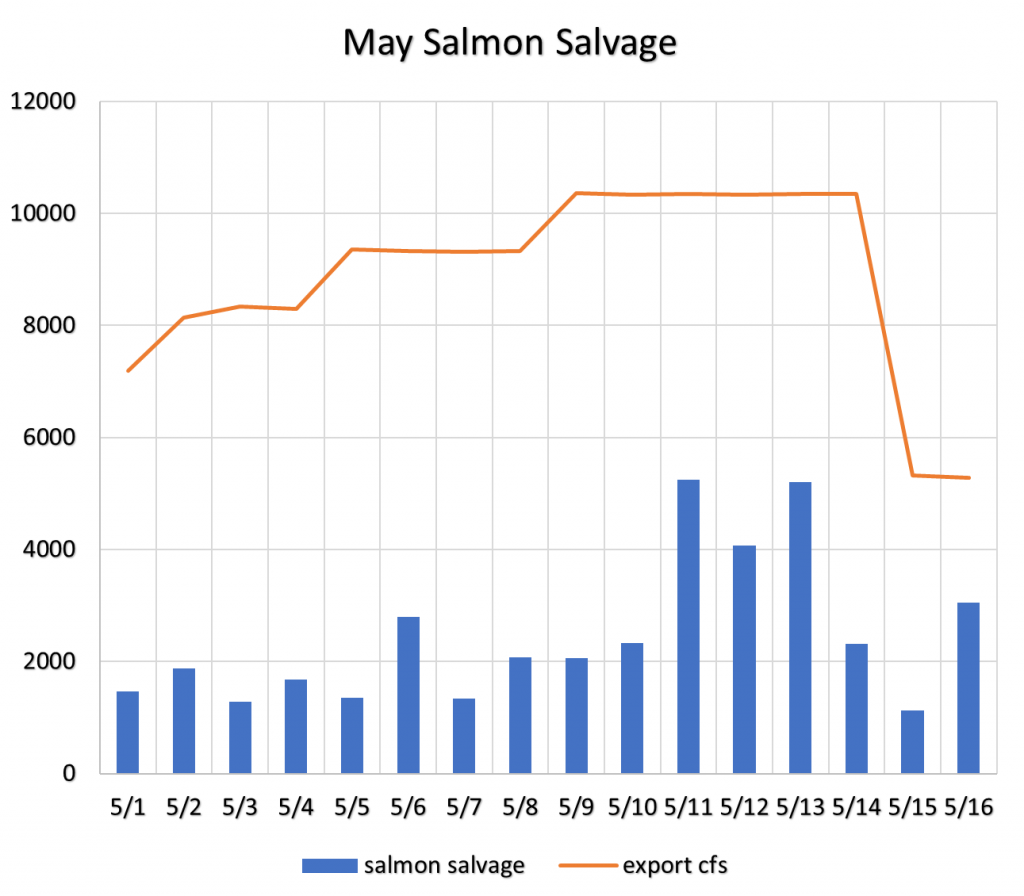Over the past few months, I have written posts on the status of specific runs of salmon in rivers throughout the Central Valley. In this post, I describe the overall status of salmon runs and recommend general actions to take to increase runs as well as commercial and sport fishery harvests. The subject is timely given a poor prognosis for the 2017 salmon runs.
It was just a little more than a decade ago at the beginning of the century that there were nearly one million adult salmon ascending the rivers of the Central Valley (Figure 1). At the same time, there were a million more Central Valley salmon being harvested each year in sport and commercial fisheries along the coast and in the rivers of the Central Valley. Improvements in salmon management in the decade of the 1990s by the Central Valley Project Improvement Act, CALFED, and other programs had paid off handsomely with strong runs from 1999 to 2005. New and upgraded hatcheries, combined with the implementation of trucking hatchery smolts to the Bay, significantly increased both harvest and escapement to spawning rivers.

Figure 1. Central Valley salmon runs from 1975 to 2016 including fall, late fall, winter, and spring runs. Source of data: CDFW GrandTab.
By 2008-2009 escapement had fallen by over 90% to a mere 70,000 spawners of the four major Central Valley runs of salmon. DFW and the Pacific Fishery Management Council greatly restricted fishery harvest of salmon beginning in 2008. The winter run, the most threatened of the four runs, fell from 17,296 to 827 spawners in just five years. Drier years from 2001-2005, poor ocean conditions in 2004-2005, record-high Delta water diversions, and the 2007-2009 drought were contributing factors in these declines. Impacts to coastal communities and the fishing industries were severe.
Extraordinary recovery measures included closing fisheries and trucking most of the hatchery smolt production to the Bay or Delta. Federal salmon biological opinions (2009, 2011) limited winter and spring water-project exports from the Delta. The state and federal governments and others spent hundreds of millions of new dollars on habitat and fish passage improvements in the Valley to improve salmon survival and turn around the declines. Figure 1 demonstrates that these efforts were somewhat effective in limiting run declines during the 2012-2015 drought, compared to the 1987-1992 and 2007-2009 droughts.
However, the prognosis for 2017 is again bleak. The consequences of the 2012-2015 drought are about to fully play out. Once again, projected runs are low and responsible fishery agencies are restricting harvest. Managers once again must take action to minimize the long term effects and help bring about recovery.
Immediate actions in wet year 2017:
- Reduce harvest: Sadly but necessarily, the Pacific Fishery Management Council and west coast states took this first step: they severally restricted the 2017 harvest in the ocean and rivers.
- Improve spawning, rearing, and migrating conditions: Sadly, responsible agencies unnecessarily compromised on Sacramento River water temperatures in the first ten days of May, 2017 (Figure 2). The Bureau of Reclamation released flows as low as 5000 cfs from an effectively full Shasta Reservoir, and water temperature at Red Bluff exceeded the 56oF temperature standards in the biological opinion for salmon and in the Basin Plan. The resulting high water temperatures affect salmon egg incubation, rearing, and emigration-immigration success. In one of the wettest years on record, there is no excuse for failure to meet flow and temperature targets in all Central Valley rivers and the Delta.
- Limit Delta exports: Delta exports this spring reached unprecedented highs not seen in recent decades, resulting in high salmon salvage rates at the Delta fish facilities (Figure 3).1 With high water supplies in this wet year, there is no need for high exports, especially if it reduces survival of salmon and other native fishes. If anything, exports should be minimal.
Near-term actions over the coming year:
- Transport hatchery smolts to Bay: the transport of millions of fall-run smolts from state hatcheries on the Feather, American, and Mokelumne rivers to the Bay provides higher rates of fishery and escapement contributions and low rates of straying. Barge transport to the Bay offers potentially lower rates of predation and straying for Federal hatcheries near Redding.
- Raise hatchery fry in natural habitats: recent research indicates that rearing hatchery fry in more natural habitat conditions increases growth rates, survival, and contributions to fisheries and escapement. Raising hatchery fry in rice fields is one potential approach.
- Restore habitats damaged by recent record high flows in salmon spawning and rearing reaches of the Central Valley rivers and floodplains: in nearly every river, flooding in 2017 has damaged habitats. These habitats now require extra-ordinary repairs and maintenance to ready them again to produce salmon.
- With an abundant water supply this year, take further actions to enhance flows and water temperatures to enhance salmon survival throughout the Central Valley: actions may include higher base flows, flow pulses, or simply meeting existing target flow and temperature goals.
In conclusion, managers should take immediate actions to minimize the damage to salmon runs from the recent drought using this year’s abundant water supply. They should avoid efforts to exploit the abundant water for small benefits to water supply at the expense of salmon recovery and should make every effort to use the abundant water for salmon recovery.

Figure 2. Upper Sacramento River flows and water temperatures in May 2017. The target water temperature for Red Bluff is 56oF. Source of data: USBR.

Figure 3. Export rate and young salmon salvage at South Delta federal and state export facilities in May 2017. The target export rate limit for May is 1500 cfs. Source of data: USBR.
